Unlock new markets: How to achieve 116% ROI with Booking.com Offers
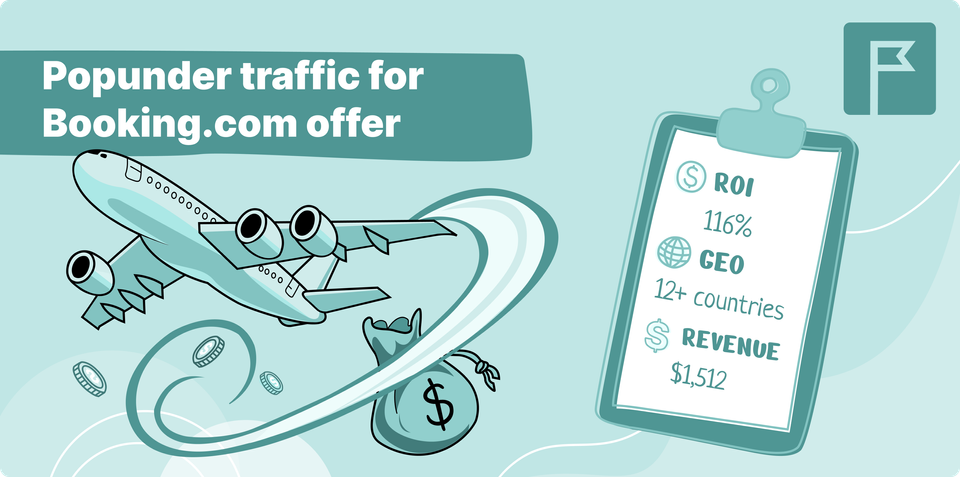
Not sure which offer to choose and hesitant to go with the most popular ones like AliExpress or Utilities? There could be many reasons for that — not everyone grew up learning Chinese (😁) or is deeply familiar with digital tools. But don’t worry! There are plenty of interesting offers out there that you can promote globally without being limited by specific GEOs. So explore, experiment, and don’t hesitate to dip your toes into the international market!
By the way, be sure to check out our other case studies on AliExpress and Utilities offers:
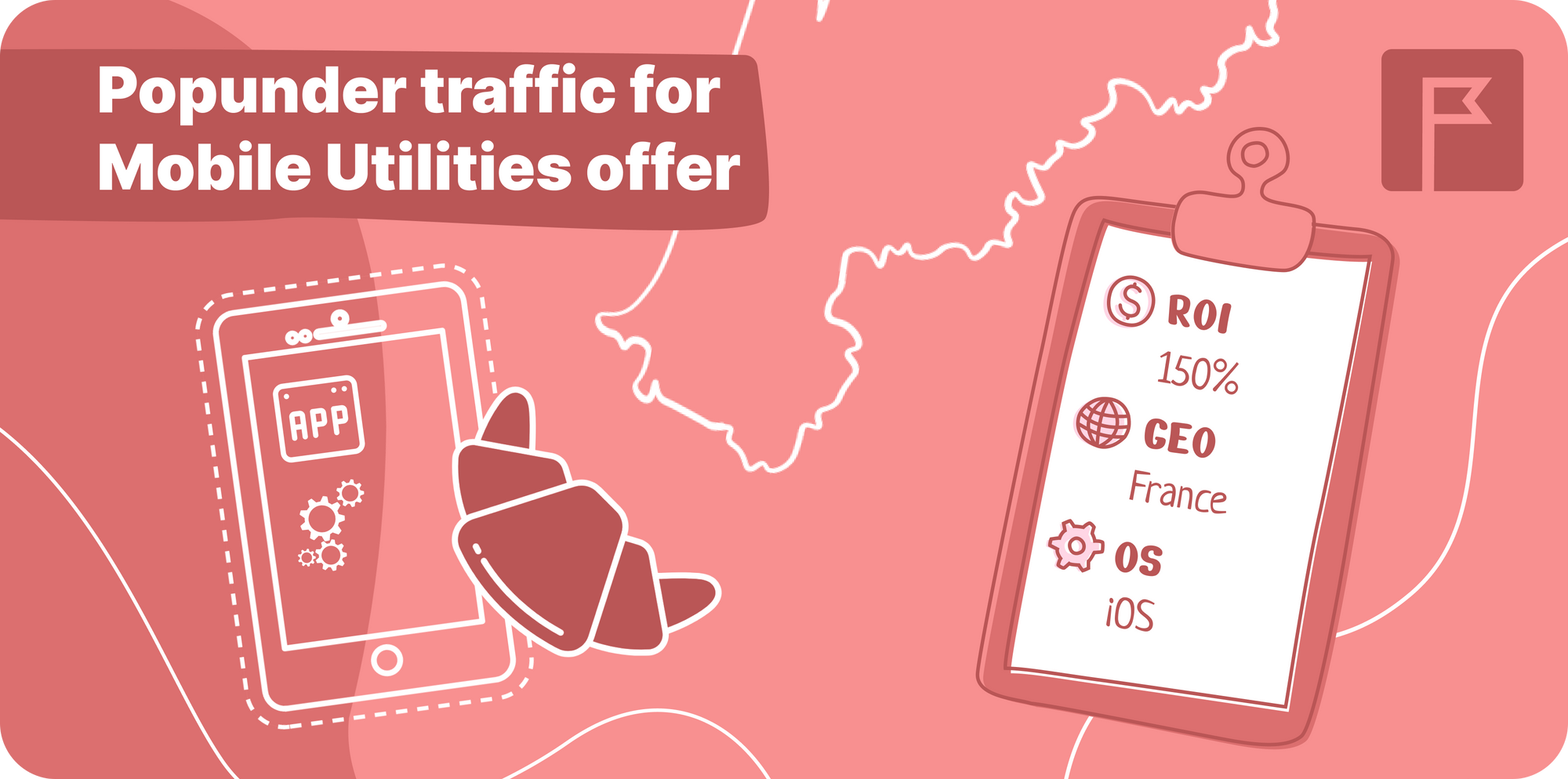
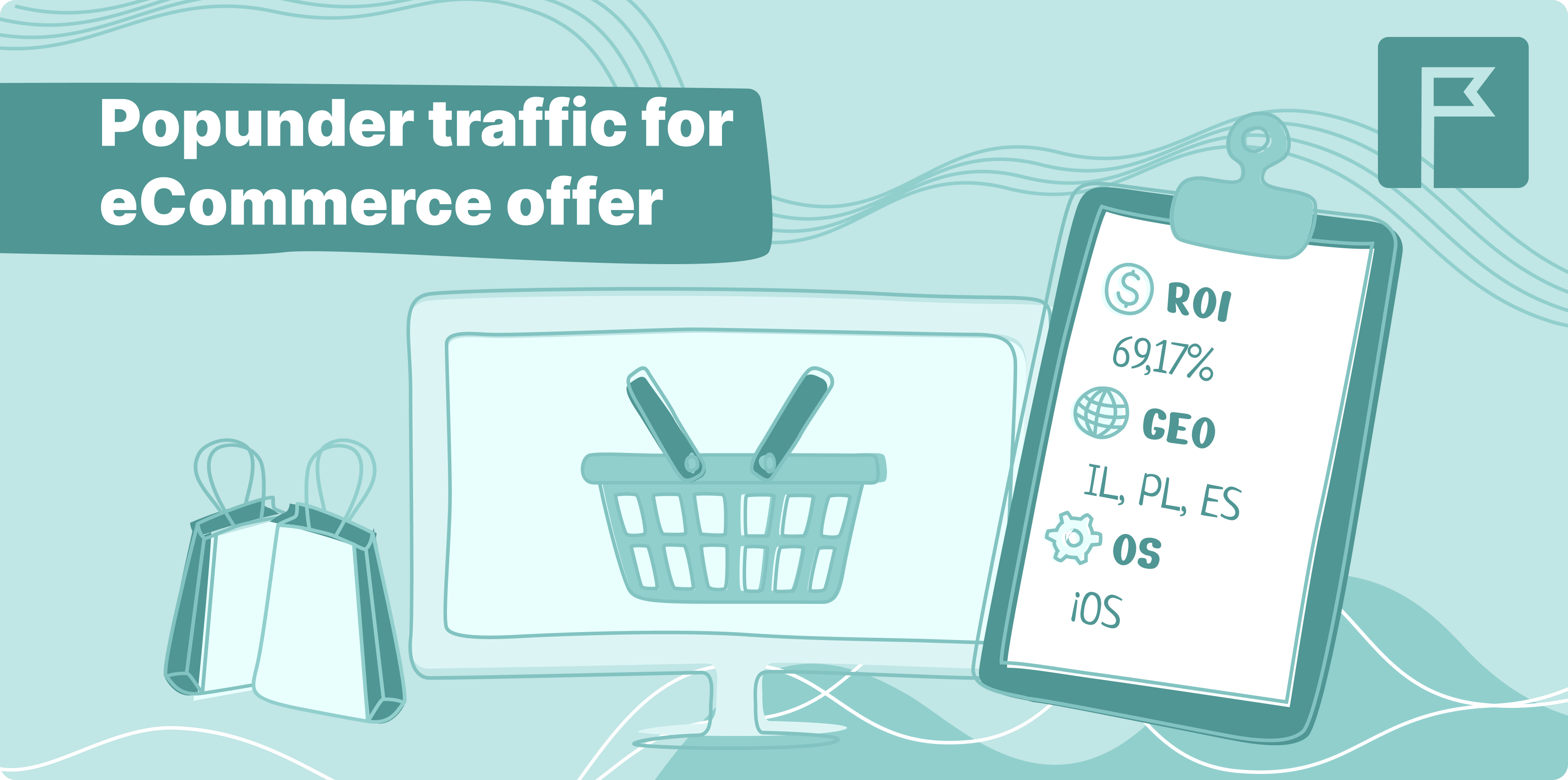
Today, we’re diving into the travel niche and exploring how to profit from offers related to flights, tours, car rentals, and more. While this vertical may not be the most popular in web traffic arbitrage, it’s certainly an intriguing one. That’s why we’ve put together some valuable tips on how to succeed in traffic arbitrage within the travel industry in 2024.
Key Points
Offer: Mainstream Aggregator
GEO: IT (Italy), GB (Great Britain), FR (France), PL (Poland), TH (Thailand), DE (Deutschland), SA (Saudi Arabia), CZ (Czech Republic), NL (Netherlands), ES (Spain), AU (Australia), IL (Israel)
Traffic: Mainstream High and Medium Activity
Ad Format: Popunder mobile
Ad campaign period: 26 August - 8 September
Revenue: $1,512.62
ROI: 116%
A bit about the vertical
Even if you’ve never worked with travel products before, you can quickly get the hang of this niche. Here’s where to start and how to get going.
Traffic arbitrage in the travel niche has proven to be highly profitable, as evidenced by the success we and our partners have seen. This niche holds great potential for new entrants because travel is often seen as a luxury, something people aspire to and prioritize, even during uncertain times. Unlike passing trends, the desire to explore new places is deeply ingrained and enduring.
The travel industry offers a blend of luxury and necessity, providing a reliable foundation for sustained growth. As long as people continue to seek unique experiences — the travel niche will remain a thriving space for arbitrage. Whether it’s flights, tours, or accommodations, the travel niche will always have an audience that’s eager to engage and spend. For those looking to enter the field, now is a great time to capitalize on this ever-present demand.
According to statistics, Europeans tend to travel 2-3 times per year on average, and similar trends can be seen in other regions. This consistent interest in travel offers a stable opportunity for traffic arbitrage. To maximize success, it's essential to diversify your approach by testing different traffic types — such as organic, paid, or social — and experimenting with various offers.
To maximize earnings, it's important to first choose the type of product you'll be promoting — airline tickets, hotels, tours, insurance, etc. Each of these has its own commission rates, but don’t focus solely on the highest one. A high rates often comes with more expensive advertising costs, which means higher expenses on your end.
Instead, try out various product types or at least a few different ones, and after a month of testing, identify the most profitable option for you. Once you find what works best, concentrate on that niche. Additionally, focus on specific regions like departure or destination cities, and plan ahead by targeting holiday periods with tailored ads, such as for New Year or Easter travel.
About Booking.com
Booking.com is a leading online travel agency and it offers a vast range of accommodations, including hotels, apartments, and vacation rentals. For media buyers, Booking.com provides a lucrative opportunity through its affiliate program. You can promote offers (such as hotel or apartment bookings, apartments, excursions, car rentals, insurance, transfers, cruises, and more) via your landing pages. By attracting users who complete bookings, affiliates earn commission for each successful transaction. This model allows you to monetize traffic from an audience interested in travel.
Advantages for affiliates
- Wide range of offers: Booking.com not only offers hotels but also various services, enabling you to diversify your promotions.
- Global reach: The platform operates worldwide, allowing affiliates to target international markets.
Let's move on to the main part of the case and review the promotion strategy.
Strategy
In 2023, Booking Holdings achieved record-breaking results with total bookings reaching $40 billion, a 24% increase from the previous year. A notable shift towards mobile bookings occurred, with over 50% of room nights booked via mobile apps, highlighting evolving consumer preferences.
Based on this trend, we've chosen to focus on mobile traffic. In mobile arbitrage, it’s crucial to ensure your product has a mobile-friendly version. Globally, 32% of travelers used mobile sites and 23% used apps. By 2031, the mobile booking market is projected to grow to $612.5 billion. Mobile offerings are the future of traffic arbitrage, especially with the growing popularity of online travel.
For promoting Booking.com offers, popunder mobile ads are an ideal choice. This ad format appears behind the main browser window and becomes visible only after the main window is closed. Because it's less intrusive, this format is less likely to distract users, thereby increasing engagement. Popunder ads are particularly advantageous for mobile traffic due to their high visibility and lower competition compared to other formats. They also demonstrate higher conversion rates and lower CPM, making them perfect for promoting travel offers like those from Booking.com.
Here you will find more detailed information:

To summarize: we direct traffic to the advertiser's site through predesigned landing pages, which open a few seconds after interacting with the main page.
A useful tip is to ensure that when a user clicks on a link in the landing page, they are immediately taken to the exact information promised in the ad. Avoid making users search for details on their own. This approach builds trust and increases the likelihood of conversion.
Geography
The travel niche is a highly lucrative market, especially in Tier-1 and Tier-2 countries. Profit can be achieved through careful customer segmentation, precise targeting, remarketing, A/B testing, and a deep understanding of customer pain points. The more precise the segmentation, the quicker the results. Attention to detail and product-specific creatives are also crucial.
When setting up ad campaigns, it's important to choose the right GEO and include relevant keywords. Consider the seasonal nature of travel. Plan content in advance, keeping in mind seasonal fluctuations and the interests of the target GEO. For example, Turkey attracts tourists in the summer, while Thailand is more popular in the winter. Holiday periods, like Christmas or Easter, are also good opportunities for special offers.
Also, periodic restrictions in the travel industry should be considered. For example, during the COVID-19 pandemic, many countries closed their borders. Geopolitical events and natural disasters can also impact travel trends, so it's important to monitor current events to avoid wasting the budget on a GEO affected by a crisis.
In our case, we selected 12 countries for testing to identify where the ads perform best: Italy (IT), Great Britain (GB), France (FR), Poland (PL), Thailand (TH), Germany (DE), Saudi Arabia (SA), Czech Republic (CZ), Netherlands (NL), Spain (ES), Australia (AU), and Israel (IL). Despite the diversity, these countries share a few key characteristics:
- High digital penetration: These countries have widespread internet and mobile device usage, making them ideal for online advertising.
- Diverse markets: A mix of developed and emerging markets with different consumer behaviors and purchasing power.
- Tourism popularity: Many of these regions are highly sought-after in the travel and e-commerce sectors.
Additionally, localized advertising content is required in these regions due to differences in language and cultural traditions.
Settings of the ad campaign and its Optimization at HilltopAds
Before launching an advertising campaign on HilltopAds, you need to register as an advertiser. You can register using this link.
Next, to create an advertising campaign, you need to:
- Go to the Manage Campaigns section
- Click the Add Campaign button
- In the campaign creation section, select the Popunder mobile ad format
- In the Traffic Channels section, choose Mainstream High and Medium Activity
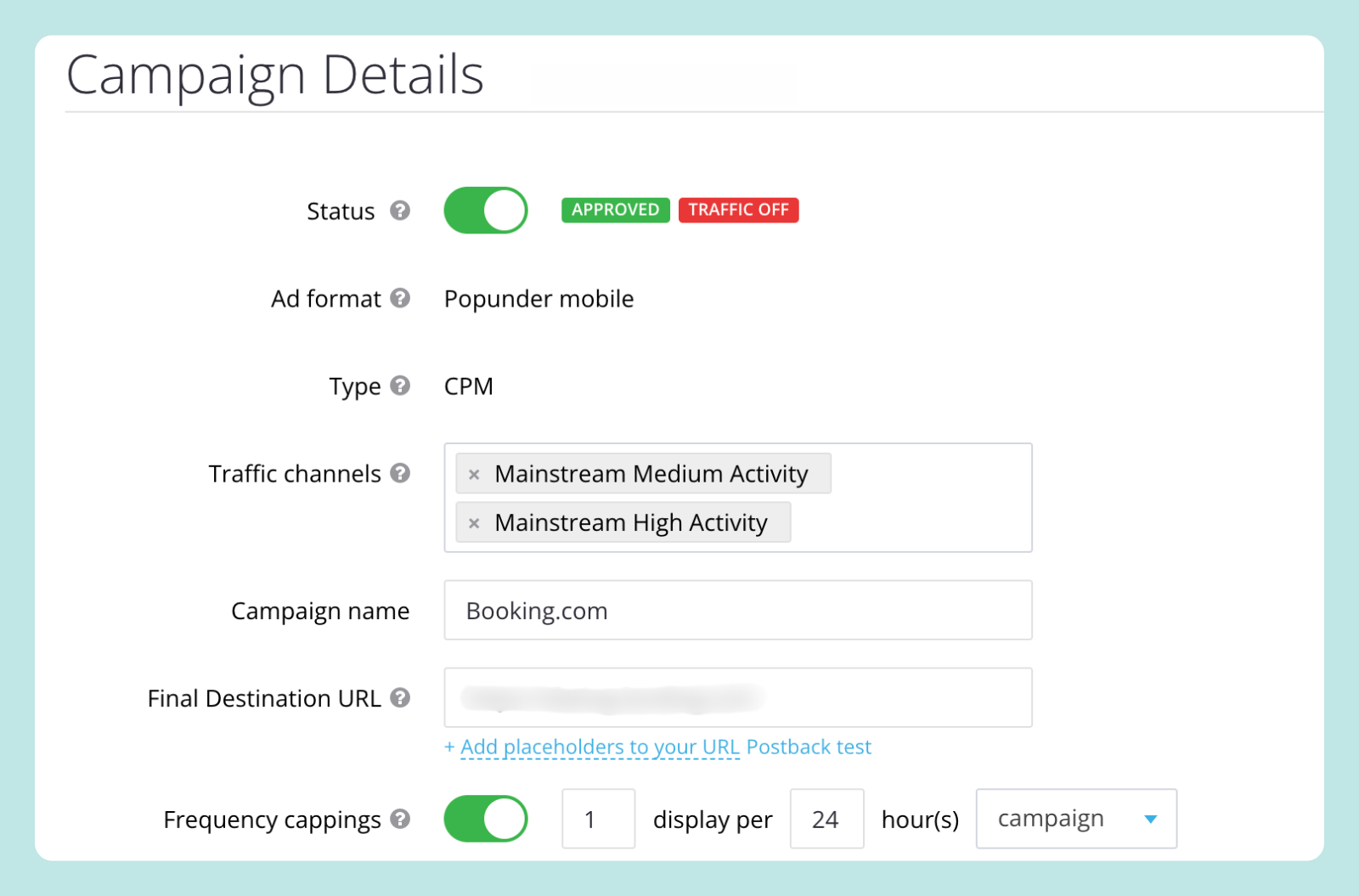
Next, it's essential to set up the Postback to track the results of your ad campaign.
For a detailed description of working with Postback and the available placeholders, check out our guide.

In simple terms, for the final URL of the offer, we need to insert parameters to pass conversions and source IDs. The parameter for passing conversions is click_id, and the source ID is zone_id.
As a result, our Final Destination URL should look like this:
https://my_offer.net/?&click_id={{ctoken}}&s1={{zoneid}}
- {{ctoken}} - HilltopAds parameter for passing conversions.
- {{zoneid}} - HilltopAds parameter for passing source ID.
In general, you can add absolutely any parameter from the available options that is necessary for further campaign analysis. However, remember that it is essential to include the click_id parameter in the final link to pass conversions.
Next, we set the necessary targeting settings:
- GEO - IT (Italy), GB (Great Britain), FR (France), PL (Poland), TH (Thailand), DE (Deutschland), SA (Saudi Arabia), CZ (Czech Republic), NL (Netherlands), ES (Spain), AU (Australia), IL (Israel)
- Device - mobile/tablet
NOTE: For each GEO, we crafted a dedicated advertising campaign, ensuring a tailored approach for optimal results. Below, you’ll find an example of one of these campaigns, illustrated through the screenshots.
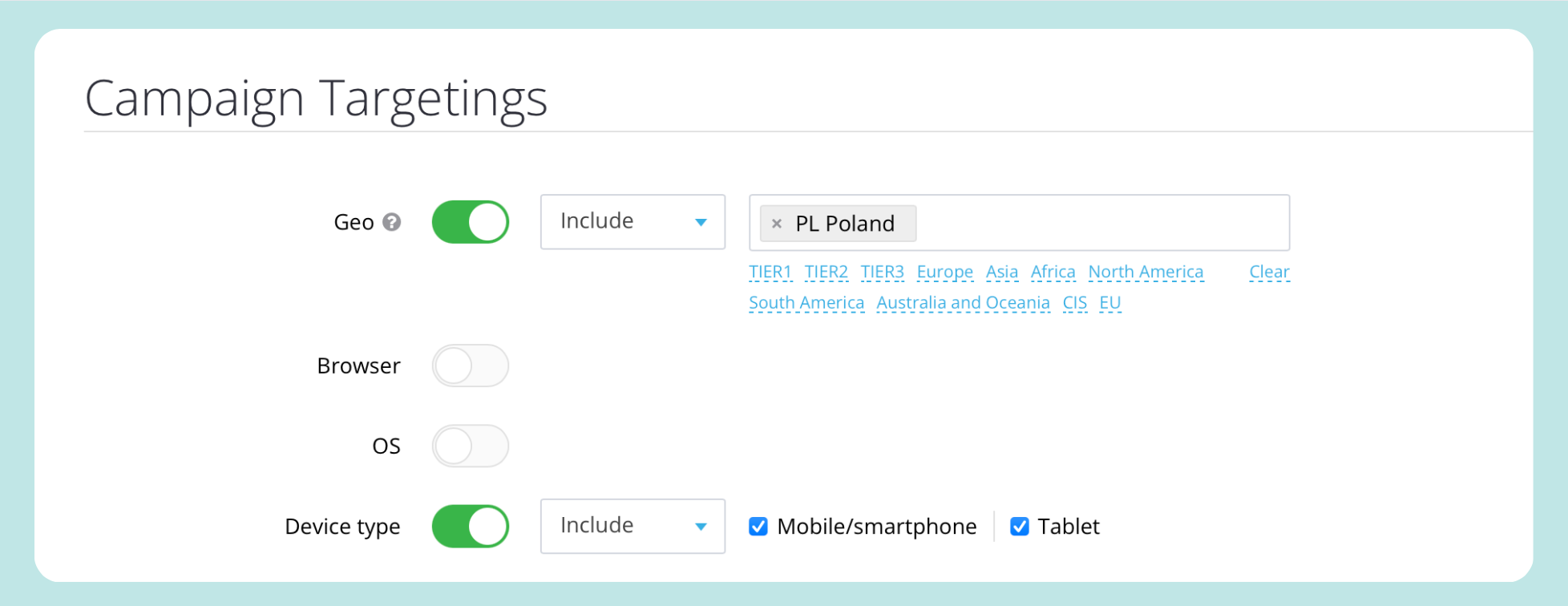
You can also configure campaign filters and allow/disallow Proxy and WebView traffic from the campaign. However, in our case, for the Mainstream Aggregator offer, we have included webview traffic:
- Proxy - disallow
- WebView - allow
WebView is software that opens a landing page with an offer within a mobile application. In other words, upon opening the application, users are directed to a single-page website with the offer.

You can set limits according to your daily and overall advertising budget, but the daily limit should not be less than $20. During the testing phase, we decided to set a daily campaign limit of $50 for all days for each GEO.
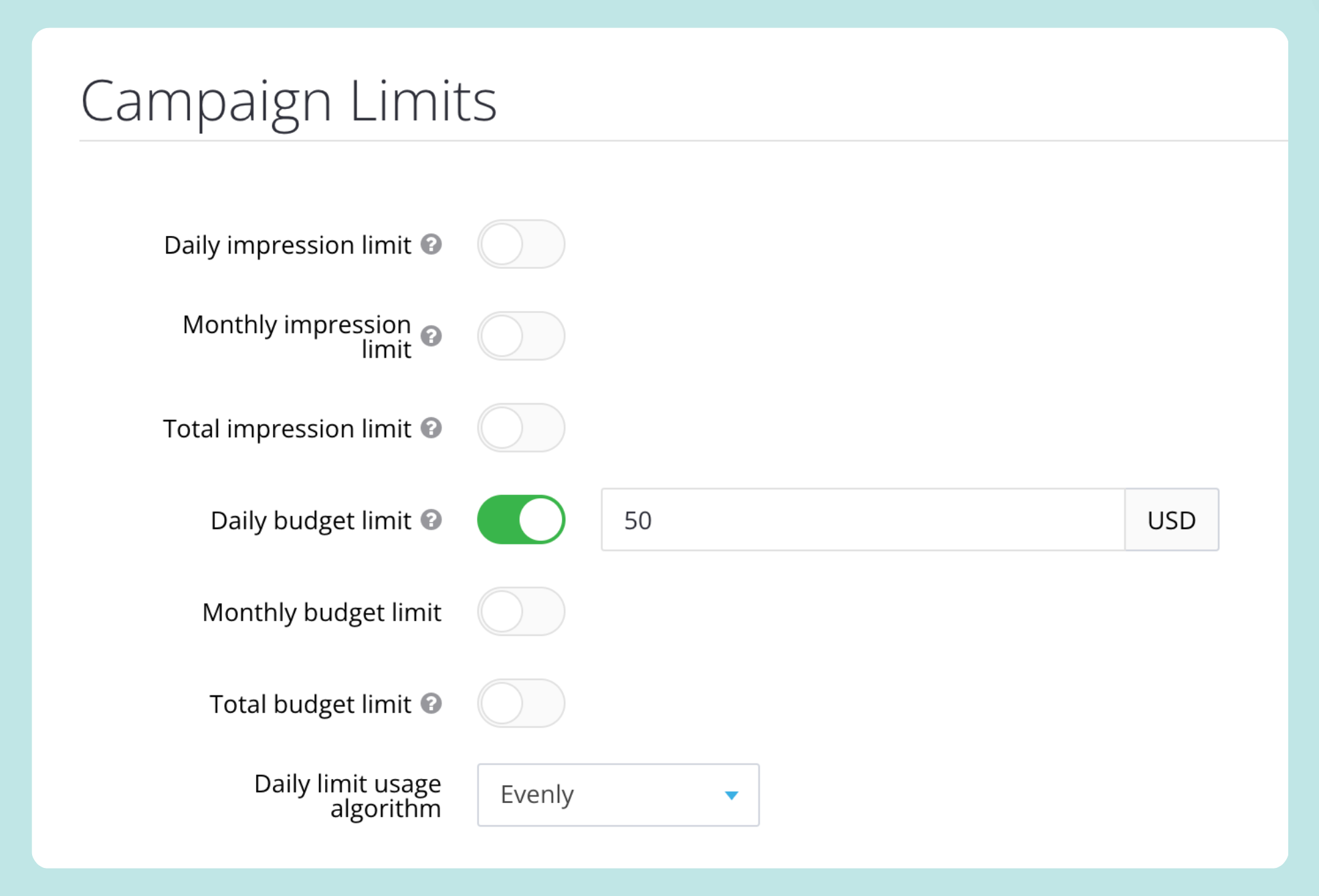
If necessary, you can also set display schedules. The final step before launching the ad is to set the cost per thousand impressions (CPM). Here, we pay attention to the Traffic Volumes graph in the top left corner, which calculates premium, minimum, and recommended CPM rates.
We set a CPM bid of $2.3 for each campaign to ensure accurate and consistent performance data, aiming for a clear understanding of the campaign's effectiveness.
Our advice: to test a new offer, start with the recommended CPM. This will show whether the offer is effective and whether the campaign needs optimization.
So, the key settings of the advertising campaign are as follows:
Ad format - Popunder mobile
Traffic Channels - Mainstream High and Medium Activity
Geo - IT (Italy), GB (Great Britain), FR (France), PL (Poland), TH (Thailand), DE (Deutschland), SA (Saudi Arabia), CZ (Czech Republic), NL (Netherlands), ES (Spain), AU (Australia), IL (Israel)
Device - mobile/tablet
CPM rate - $2.3
Optimization and intermediate results
We applied the automatic optimization tool from the first day of the campaign, setting the analysis parameters to 48 hours with a threshold of 1,500 impressions and a number of conversions of less than 1. This allowed us to reduce spending on inefficient ad sources and focus the budget on more promising audience segments.
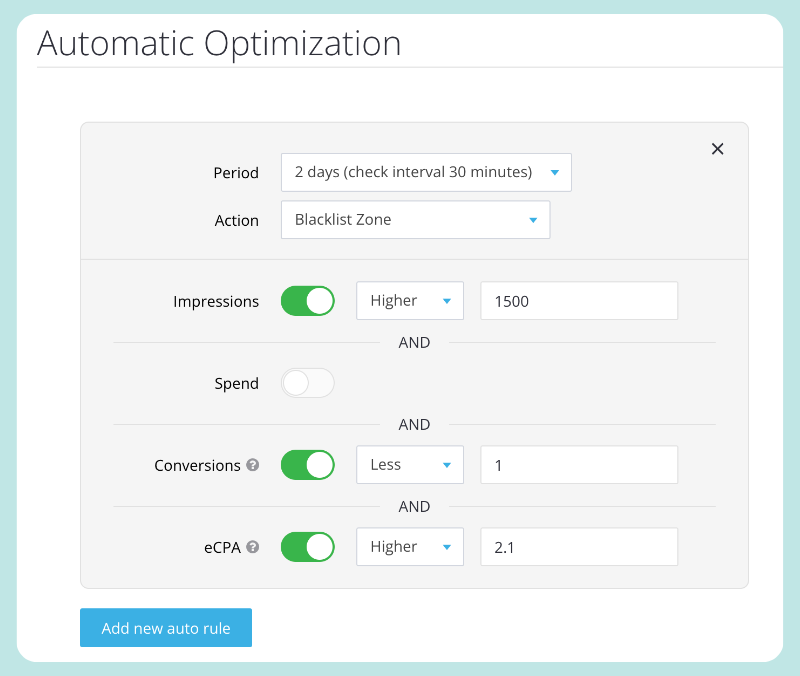
To learn more about the capabilities of automatic optimization with HilltopAds, you can check out the article on the website:

Auto Optimization is a tool for automatically adding non-performing traffic sources. Thanks to this feature, the HilltopAds system removes non-profit sources from your advertising campaign and adds them to the BlackList.
Results
The most successful GEOs were Czech Republic and Poland. After a focused 14-day optimization of the advertising campaign, we achieved the following results:
- Total Costs (Spent) - $700
- Total Earnings (Profit) - $1,512.62
- ROI (Return on Investment) - 116%


ROI is one of the key indicators in digital marketing that allows you to assess the profitability of an advertising campaign. In simple terms, ROI shows you the percentage of advertising investments that you have managed to recover through earnings from the ads.
The formula for calculating ROI is:
ROI = (total earnings - total cost) / total cost * 100%
In this case, the return on investment is 116%.
Net Profit
The net profit derived from the Mainstream Aggregator offer launched on the HilltopAds platform illustrates compelling return on investment. With a total revenue of $1,512.62 and advertising expenses amounting to $700, the campaign yielded a net profit of $812.62.
This emphasizes the effectiveness of the HilltopAds advertising network as a valuable platform for promoting offers such as Mainstream Aggregator in Tier-1 countries.
Conclusion
Success in traffic arbitrage heavily relies on experimentation and meticulous campaign optimization. It starts with selecting the right GEOs but extends to fine-tuning every detail, including manual bid adjustments and controlling ad frequency. If the platform you are working with supports A/B testing, it’s important to fully leverage this feature. For example, you can test the following hypotheses on your traffic:
- Does the "Buy now before the price goes up" strategy work?
- How effective is situational marketing?
The key to success is continuous work and ongoing experiments. This applies not only to earning through traffic arbitrage in the travel niche but also to maintaining a high level of revenue.
Thus, a successful strategy in arbitraging Booking.com offers involves not only proper budget allocation and GEO selection but also constant hypothesis testing. This approach helps discover the most effective solutions for different audience segments, ultimately leading to significant revenue growth.

